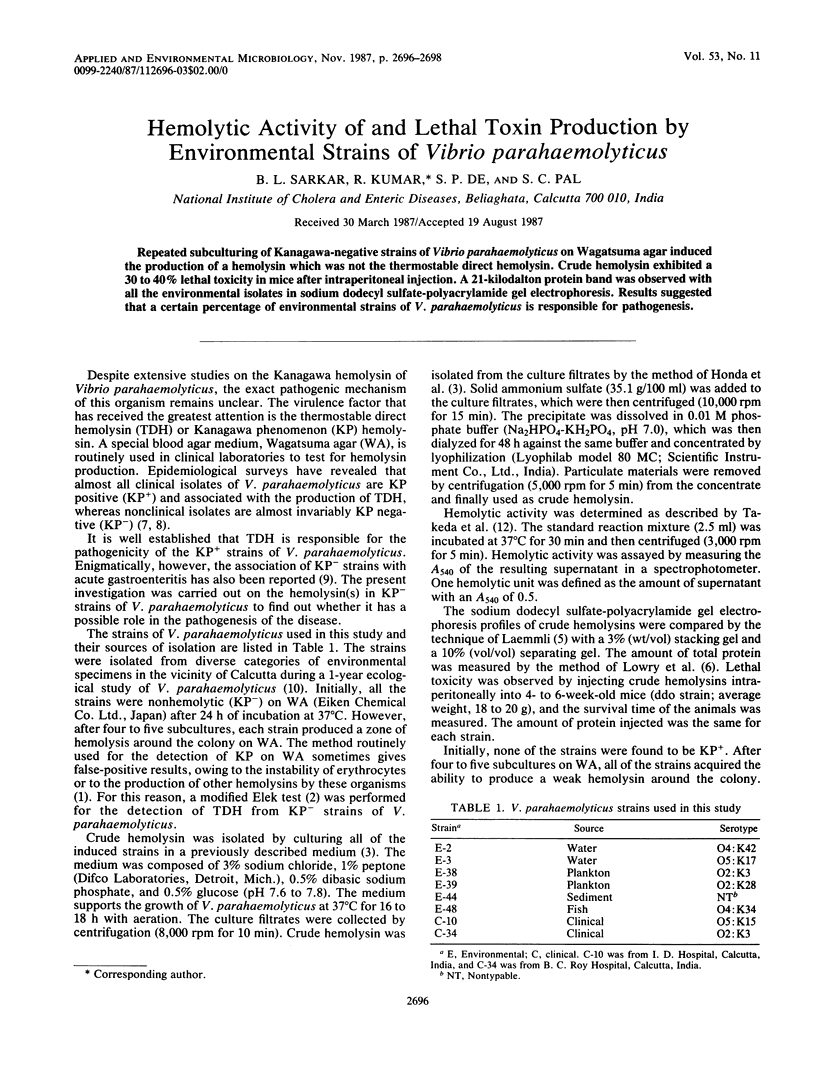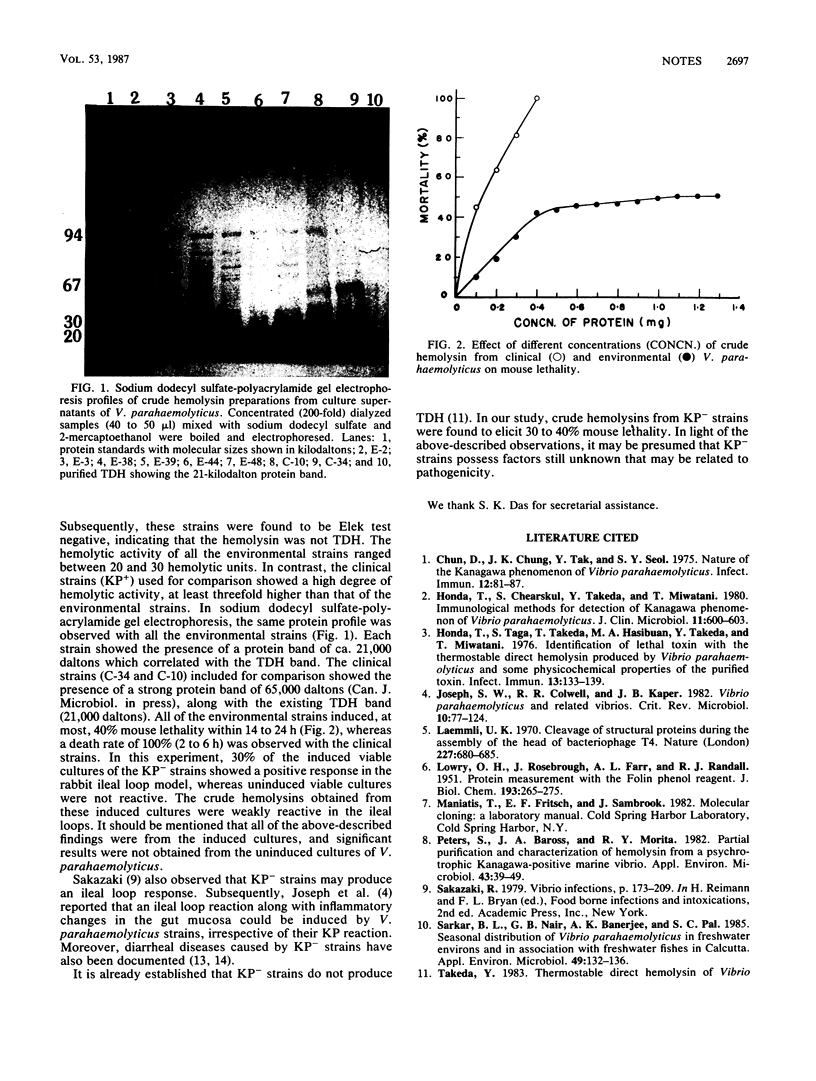Abstract
Repeated subculturing of Kanagawa-negative strains of Vibrio parahaemolyticus on Wagatsuma agar induced the production of a hemolysin which was not the thermostable direct hemolysin. Crude hemolysin exhibited a 30 to 40% lethal toxicity in mice after intraperitoneal injection. A 21-kilodalton protein band was observed with all the environmental isolates in sodium dodecyl sulfate-polyacrylamide gel electrophoresis. Results suggested that a certain percentage of environmental strains of V. parahaemolyticus is responsible for pathogenesis.
Full text
PDF


Images in this article
Selected References
These references are in PubMed. This may not be the complete list of references from this article.
- Chun D., Chung J. K., Tak R., Seol S. Y. Nature of the Kanagawa phenomenon of Vibrio parahaemolyticus. Infect Immun. 1975 Jul;12(1):81–87. doi: 10.1128/iai.12.1.81-87.1975. [DOI] [PMC free article] [PubMed] [Google Scholar]
- Honda T., Chearskul S., Takeda Y., Miwatani T. Immunological methods for detection of Kanagawa phenomenon of Vibrio parahaemolyticus. J Clin Microbiol. 1980 Jun;11(6):600–603. doi: 10.1128/jcm.11.6.600-603.1980. [DOI] [PMC free article] [PubMed] [Google Scholar]
- Honda T., Taga S., Takeda T., Hasibuan M. A., Takeda Y., Miwatani T. Identification of lethal toxin with the thermostable direct hemolysin produced by Vibrio parahaemolyticus, and some physicochemical properties of the purified toxin. Infect Immun. 1976 Jan;13(1):133–139. doi: 10.1128/iai.13.1.133-139.1976. [DOI] [PMC free article] [PubMed] [Google Scholar]
- Joseph S. W., Colwell R. R., Kaper J. B. Vibrio parahaemolyticus and related halophilic Vibrios. Crit Rev Microbiol. 1982;10(1):77–124. doi: 10.3109/10408418209113506. [DOI] [PubMed] [Google Scholar]
- LOWRY O. H., ROSEBROUGH N. J., FARR A. L., RANDALL R. J. Protein measurement with the Folin phenol reagent. J Biol Chem. 1951 Nov;193(1):265–275. [PubMed] [Google Scholar]
- Laemmli U. K. Cleavage of structural proteins during the assembly of the head of bacteriophage T4. Nature. 1970 Aug 15;227(5259):680–685. doi: 10.1038/227680a0. [DOI] [PubMed] [Google Scholar]
- Peters S., Baross J. A., Morita R. Y. Partial purification and characterization of hemolysin from a psychrotrophic kanagawa-positive marine Vibrio. Appl Environ Microbiol. 1982 Jan;43(1):39–49. doi: 10.1128/aem.43.1.39-49.1982. [DOI] [PMC free article] [PubMed] [Google Scholar]
- Sarkar B. L., Nair G. B., Banerjee A. K., Pal S. C. Seasonal distribution of Vibrio parahaemolyticus in freshwater environs and in association with freshwater fishes in Calcutta. Appl Environ Microbiol. 1985 Jan;49(1):132–136. doi: 10.1128/aem.49.1.132-136.1985. [DOI] [PMC free article] [PubMed] [Google Scholar]
- Takeda Y., Hori Y., Miwatani T. Demonstration of a temperature-dependent inactivating factor of the thermostable direct hemolysin in Vibrio parahaemolyticus. Infect Immun. 1974 Jul;10(1):6–10. doi: 10.1128/iai.10.1.6-10.1974. [DOI] [PMC free article] [PubMed] [Google Scholar]



